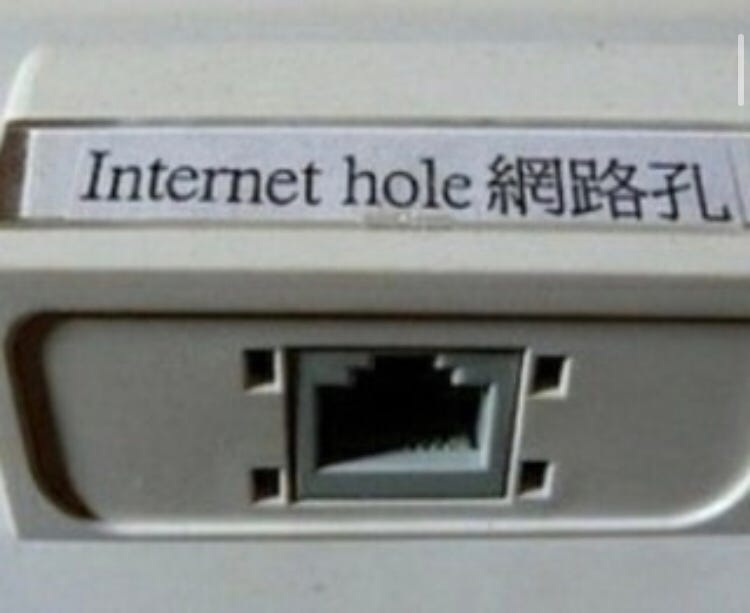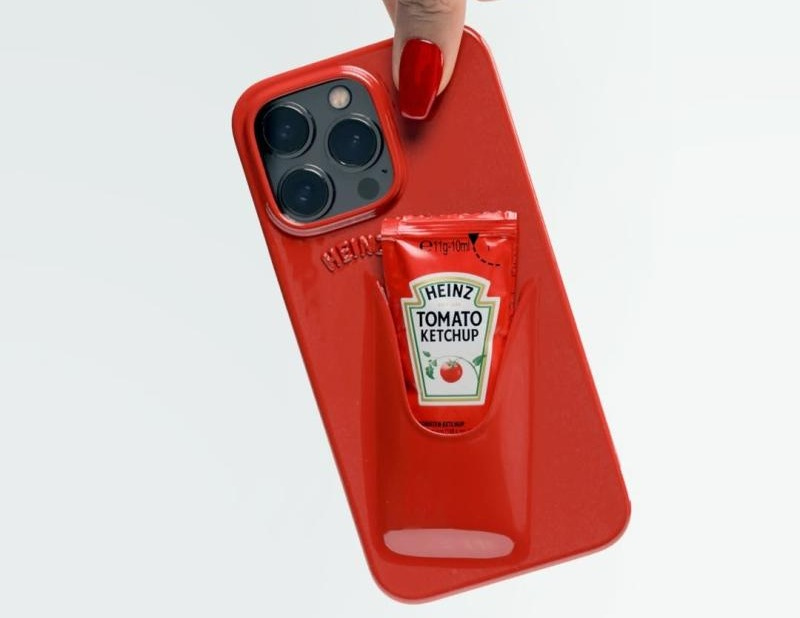Pay, Stay, Play: Party Etiquette for Brands on a Closed Door Internet
The cultural internet has changed its locks, burrowed underground, or gone offline. Squatters rights are over, and brands who want in need to pay their rent or risk never being let in again.
A confession and an assessment
Once upon a time, on an internet far, far away, I was starting out my career in social. I was working predominantly with an “experience” brand left to the 00s. As part of a deeply dubious strategy to flog £5 off vouchers and increase bookings, we made fake forum accounts pretending to be Manchester United Fans looking for rooms near the FA Cup. We’d create Reddit profiles to go under /r/mum and push Spa Deals. We’d all upvote each other. I cannot stress how pre industry regulations this all was.
It was grubby, but it worked. Sort of. We were on that precipice before all trust in digital humanity had collapsed. Just two years later, our collective deeper understanding of the darkness of the internet would’ve intervened with the unveiling of the Cambridge Analytica scandal.
But fast forward to the 20s, and this sort of digital duplicitousness has become common place. You can’t move for burner accounts, serial lurkers, planted posts and paid influence - let alone the bots astroturfing the living fuck out of social spaces. The amount of actual, real, humans interacting on social is dwindling, something so artfully illustrated by Eugene Healey’s Social Media Recession piece. For brands, this marks a serious problem. If the very metrics we’ve built the entire social landscape on have become impossible to validate, and are losing stock value – how can the already precarious to measure ROI of these spaces be attributed?
Truth be told, brands are what got themselves into this mess. They’ve long known that very few people want them on their internet, but we’ve sort of all learnt to live together in happy harmony, some better than others. But there has been a marked shift in just over a 18 months. The internet party of the last five years, that seemingly never was going to end, has found a new location. Everyone worth inviting has left via the back door. Everyone still in the house are clones of one another. And brands are still walking through the door empty-handed and wondering why the hell nobody wants to let them in.
This piece is about what happens next. When the internet is close-door and invite only, how do you get a hook up? The solution lies in the problem: brands have been squatting on the people’s internet for far too long. If you want to stay in the room you’ve got to pay your rent.
There’s a Hole in my Internet, Dear Eliza
Despite a wild west beginning, the internet over the 21st century had shaped into a cosy home for many people – the rules were pretty straight forward in Web 2.0, and there was genuine value and positive interactions to be born out of it. For every Catfish 3 part special, there were love stories in their thousands. I personally made life-long internet friends from my dedicated Tumblr years of 2011-2016. But as it got bigger, more unruly, more layered, more fractured, the very heart of it started to fall out. A gradual scraping at the edges of all that was holy has left an empty core. No one person lives the same social experience as the other, with algorithms trying their best to personalise experiences until there’s nothing personal left. I am never more conscious of this than when I speak to my team – 30 or so people who all live in the UK, with the most wildly differing FYPs you could imagine. Sure our ages, locations and interests differ, but how could the very wallpapering of Jaz’s Wedding not even reach their feed?
It's a bizarre phenomenon, that you could go ‘viral’ for lack of a better word, and yet not a single person in your neighbourhood will have seen the content. I’m sure there are people amongst us who wouldn’t be able to pick out even the shiniest stars of the modern affliction out of a line up. Hawk Tuah Girl can probably go shopping without sunglasses.
Up until 18 months ago, the internet was predominantly reactive. I know what you’re thinking. What’s more reactive than the current moment where a singular squeak can be remixed into a club classic that dominates the summer sound system? But there is a decided difference that cropped up around the time Elon Musk decided to strip out the basic functionality of Twitter for good. The persistent tweets made up of the posting middle classes (a brilliant analogy from Marie Le Conte), meant that pretty much every minor infraction had a string of commentary behind it, conflict ridden textures of an internet tapestry. But the falling favour of X in the public eye, paired with the departure of those middle classes to the fringes of Bluesky and Threads, meant that this type of bite went underground or decentralised. Or, if it did exist, it sat neatly in the echo chamber of a FYP built brick by brick, with an almost certainly predictable punchline.
Even where the commentary is carefully curated, a weird transtiktoklic accent (I think I’ve done something there?), makes the multitude of perspectives feel depressingly one dimensional. When Joel Golby posted one of his story rants this week (pictured below), I doubt he thought it would end up quoted in a cultural commentary Substack, but… here it is.
That list line “they took the machines of hating away from us and we are poorer for it” is the sort of throwaway internet poetry we’re in danger of losing, but also speaks to the sensation that we seem afraid to point out when something no longer belongs or bares relevance in an online space anymore. This perfectly illustrates the idea of a post-authentic internet that I’ve been somewhat obsessing over since I got back from SXSW in March. In a life changing talk entitled Hyperrealism in the Age of Visual Illiteracy, the ECD of Tendril, Caroline Leong, spoke to the idea that people don’t post to be known anymore – they post to be endured. Isn’t the most pathetic and accurate state of mainstream social? The safety of hooking into to the same sound of every other FMCG brand in the land is as tempting as any blanket. And whilst there’s a time and place for that kind of behaviour, and it will more often fill a gap on a tricky content pillar, it’s not the sort of stuff that’s going to make you memorable. Its in this flattening that brands have been hiding in plain site with fairly solid engagement metrics for so long. But you are simply feeding out the same regurgitated thought packaged for brand to a load of ghosts, bots, and zombies. A pacified internet, full of those being censored or censoring themselves.
Some brands aren’t stuck here though. There’s a distinct undercurrent of braver start-ups (or conglomerate backed products posing as start-ups), whose social strategy doesn’t start at the point of reflection. They don’t mirror; they magnetise. Whilst I doubt, they avoid reporting on reach metrics, I’m almost certain that their reports work deeper into brand depth then brand breadth. We talk to clients about trying to dig into the dark, to spend time in their own passion points private circles, to better understand the pull that drags you beneath the surface. Because this is where, for a very long time, the really juicy stuff has been happening. And when you’re making movements underneath, the good stuff will bubble to the surface and make it back into the mainstream internet. Equally, when you push the conversation out the screen and into the real-world atmosphere, and you’re transcending the meme into the physical, a la the Loewe Tomato, you also see that energy flow back into your feed. By playing by the binary rules of the limited tools of the public internet and answering only to their flavours of the week, brands are the most unappealing members of the guest list. If you actually want to be invited in, you need to bring more than a 6-pack. And so, we circle back to paying your rent.
Pay, Stay, Play.
No matter what role brands play in culture, there will always be a low-level sense that they are uninvited houseguests – even when they’re the ones facilitating the party. This is truer on social, where the value exchange is even harder to quantify. In the early days of the internet, brands brought a few party favours and that saw them good in crashing for a few years. But as the value of the parties rose, and the people inside them grew more agency and clout, brands started banging on the door, hoping someone left one of the back doors unlocked. And somewhere along the way, the party had relocated to another spot down the street. One with a series of underground tunnels. The spot is in Berlin, it would seem.
You’ve got the address, you know how to get there, but how are you going to get through the door?
1. Pay Your Rent
Squatters’ rights are over. You can’t just claim the space anymore and expect something to exciting or worthwhile to happen, you need to work out what your value is and be clear and intentional about it. Why are we even looking in your direction when you’re ringing the bell? Paying your rent ≠ media spend, or cliched attempts a “authenticity”, but rather the actual contribution, the cultural effort, the social service, the cost of attention.
Let me hold your hand as we say this:
Paying your rent is NOT using the same audio as 100 other brands two weeks late.
It's NOT engagement baiting in the comment section (Michael Corcoran said it best ⬇️)
It’s NOT hoping your awareness day content is finally going to pop off (did it really ever?)
It’s NOT seeing the trending hashtags of the moment and shoving them all in your caption copy
What it might be:
Figuring out a consumer problem and showing how your product solves it
Bringing your community, like your actual community, front and centre to your content
Showcasing elements of your story that bring the consumer behind the curtain and breaks the fourth wall
Develops a creative treatment that transcends URL spaces into IRL, giving consumers multiple touch points to engage
Or even the simple but effective clarity and communication consumers are likely seeking you on social for. Do not sleep on how helpful you can be. I’ve seen the best ideas of a generation lost to the perceived constraints of the utility content pilar.
2. Earn Your Stay
Okay, you’ve got through the front door and you’re handing out beer bottles with reckless abandon. You’re on your way to being that girlie – but you HAVE to consider how you play it now you’re through the doors. How long are you going to stay here for? And why?
Controversially, I think we’ve brainwashed some brands into thinking they need to have an Always On – but if you can’t do it well, and it’s going to be bland, isn’t it better to show up – say your peace – and see if the offering invites a repeat invitation?
When considering your Stay, you’ve got to think about establishing tone, sustaining relevance, and adding cultural context.
Awareness – what’s the conversation, and how are you related to it?
Restraint – when do you speak versus when do you champion the voices of others (community, creator)?
Consistency – is what you’re regularly bringing to the table entertaining, educational, or simply… anything?
To labour the metaphor, you can’t just come in and take over the aux all night. And you really got to know when to take the L and leave through the back.
Overstaying vs Staying Power
Overstaying is your brand social strategy simply ripping off trending video formats, rinse and repeat, without considering the why.
Overstaying is cramming your posting schedule with crap content because some blog post told you thar you need to be hitting at least twice a day to break out of 300 play jail (have you considered… the content might just not be that original or interesting?)
Overstaying is making a big play about wanting to do social like Duolingo, but not even clearing your approval schedule with your legal team, always meaning you’re a minimum of a month late.
Staying Power is identifying the moments that matter to your community (not the ones you can find on www.daysoftheyear.com) and properly considering how you’re showing up to that.
Staying Power is working with your community and creators to develop not just great content, but great ideas – moving from brand advocacy into brand equity.
Staying Power is reading between the lines of every single data point, qualitative and quantitive and finding the anomaly that leads to the insight that leads to the next creative execution. We talk a big old talk about personalisation and audience insight in this industry, but I see such little evidence of that.
3. Plan Your Play
Okay guys, now we’re into the fun bit. This is where pretty much every single one of us starts right? Big ideas, big ambitions, big content. But you very rarely can strike out with just this alone. The aforementioned rental dues and invitation extension is oftentimes needed to get this bit to sing like Mariah.
So many brands are absolutely fine just staying where they are with 1 and 2… but if you’ve made it this far, why not line one up on the jukebox and go for gold?
Play is all about the layer that turns brands for willing participants into part and parcel of the community experience. Play isn’t just about living online; it’s about facilitating that feeling of brand by osmosis. Play can be in the depths of deep dark social, or it can be living in the bubble of the outer atmosphere. This is where elements of humour and surrealism can eke out from even the most straight laced of contenders. You’ve earned your right to kick your shoes off and jump on the sofa.
It’s:
Surprise
Style
Weirdness
Memorability
World Building
Get it right? You might even be invited to the afters.
But please, this is NOT:
Another crap like and subscribe competition (kill me)
A £500k brand film with a social lens (do these ever really work?)
Cosplaying as a Gen Z (I cannot see another brand say no cap or slay)
But it might be:
An IRL event that merges between physical and digital spaces :)))
Creating a tool for your community that will make their lives better
Hacking or breaking into an existing behaviour in a fun way (e.g. Taco Bell bags for returns)
Sometimes literally some really good merch lol
Consumers have a sixth sense for try-hards. Don’t be one!
TLDR
This is just one vaguely fun framework to think about your brand beyond the boring constraints of best practice or bland blending. A survival strategy for the suffering social planner. But ultimately, the point is if you focus too hard on trying to emulate the success of others, you’re never going to quite get it (same goes for life).
But if you did want to screenshot this for a deck, nows your chance!
The Morning After
Okay, you built your way up from low level lurker to the life and soul of the party, and its looking good for the next few weeks, months, maybe even years if you’re Poppi. But what next?
Well, the internet is only going to get weirder and more unpredictable. That’s what makes social media strategy such a fun game for those of us who decided to make a career out of it. But I strongly feel the age of simulation and creative collapse is losing its footing against the backdrop of AI cynicism and a consumer base burying out of view. For all the buzzwords and empty platitudes, there’s an opportunity to resist against the rough hand we’ve been dealt. Social budgets being handed over to AI bots? Okay good luck! It’s up to the us to keep fighting the good fight and not settling for the sludge.
Culture hasn’t disappeared – and where it’s been flattened into sameness, it has begun to become concave. Attention is still up for grabs, but you have to be willing to risk some things to get it. And that means not always asking for permission.
Brands who are getting away with this? Who have the open-door policy that we just spent all this time unpacking?
They’re paying they’re rent by contributing, their earning their stay by showing up and knowing when to shut up, and they plan their play to build something memorable enough to exist out of the chasm of the feed. Considering joining them, or face a life waiting outside a closed door.
🚨💻💌Need help with your culture first Social and/or PR strategy? Call 1-800-Tomorrow drop us an email and we’ll be in touch!💌💻🚨
SIM CITY: Tales from the Algorithm is a Substack all about the internet, social media, and the cultural anthropology of the digital world. Subscribe for more 😇
References linked, there were too many to list this time lol









